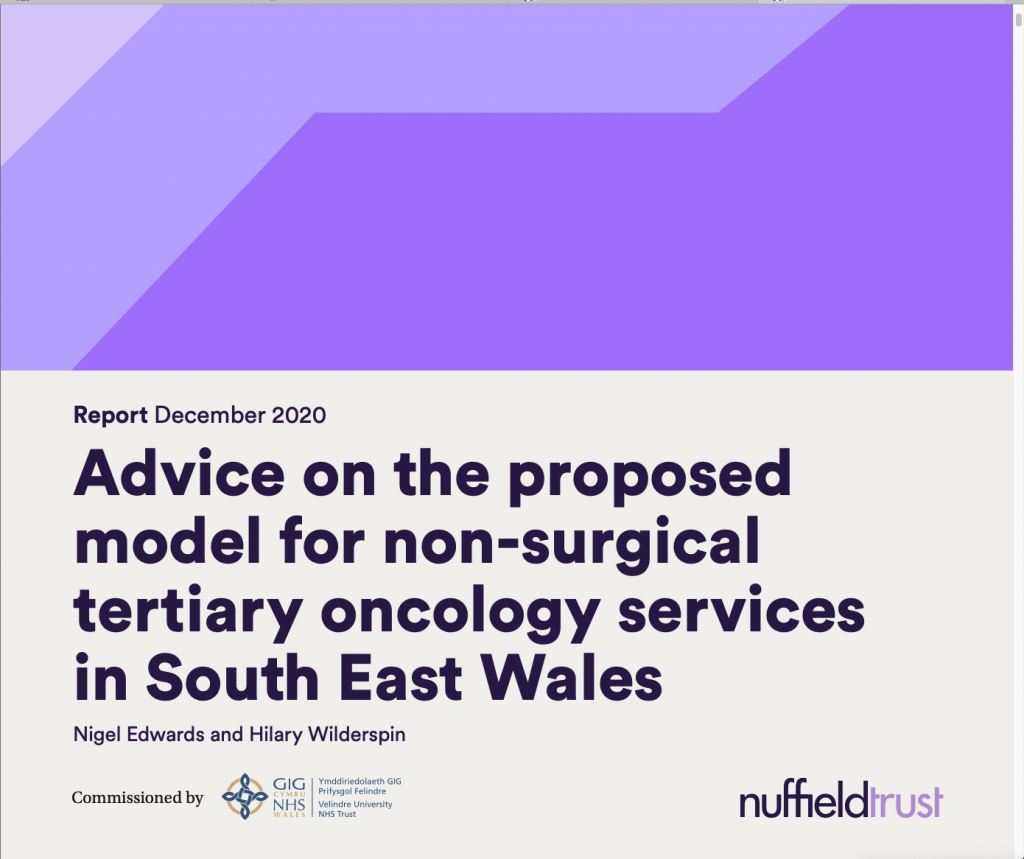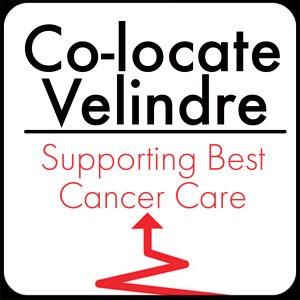Independent Review?
Regular readers of these blogs will know that we have repeatedly called for an independent clinical review of the stand-alone model for the new Velindre Cancer Centre.
As an example, we’ve described the process undertaken in the independent review of the Mount Vernon Cancer in this blog: https://colocate-velindre.co.uk/jaguar-electric-vs-rickshaw/.
Many people think that the Nuffield Trust carried out an independent review of the model in late 2020, so therefore all is well. Velindre and Welsh Government are very happy for people to believe this, but sadly it isn’t true.

The Nuffield published advice to Velindre on 1.12.20. It can be found here: https://www.nuffieldtrust.org.uk/files/1606833630_advice-on-cancer-services-in-se-wales-velindre.pdf)
We’ve touched on the Nuffield advice briefly in a previous blog https://colocate-velindre.co.uk/what-about-the-nuffield-trust-advice/. This blog looks further at the Nuffield advice, what it covers and what it doesn’t. You can read a more detailed synopsis of the entire report here: https://colocate-velindre.co.uk/nuffield-synopsis/
Terms of Reference
The ‘Terms of Reference’ are crucial to understanding any report. They set out what the reviewers can and can’t report on, and therefore largely shape the report itself. In an independent clinical review, the Terms of Reference would be set by the body requesting it, not the organisation being reviewed. The body requesting the Nuffield advice (not review) was Velindre itself. They could therefore set the Terms of Reference to answer the questions they wanted- and no others.
The Integrated Network Model
The new Velindre Cancer Centre is only one part of Velindre’s overall development programme, Transforming Cancer Services (TCS). As well as the cancer centre, TCS also includes elements aimed at allowing cancer patients to receive care closer to home. Things like establishing a satellite radiotherapy centre in Gwent, and providing more services in local hospitals. We welcome much of this ‘integrated network model’, and look forward to seeing it implemented one day.
When setting their Terms of Reference, Velindre didn’t ask Nuffield to advise on what was needed, but rather to comment on the risks and benefits of the already decided upon integrated network model. The Terms of Reference for Nuffield’s advice to Velindre were as follows:
To provide a report and recommendations taking account of the following questions:
- What are the benefits of the proposed integrated network model and how could these benefits be further optimised with reference to research from other health systems?
- What are the risks inherent in the proposed integrated network model – including the location of the main elective specialist cancer centre, the new Velindre Cancer Centre (VCC) on an area in Whitchurch in Cardiff known as the ‘Northern Meadows’ in terms of managing the acute care interfaces and the quality and acuity of clinical support for cancer services across all networked sites? (Our italics)
The stand-alone Cancer Centre was never up for discussion
We can see that these term of reference explicitly exclude any discussion of the cancer centre being anything other than ‘stand-alone’. This is not really surprising, as the decision that the cancer centre should be stand-alone was made by Welsh Government in 2014/15 as a condition of funding. We’ve described how this came about here:https://colocate-velindre.co.uk/the-birth-of-new-velindre-mystery-solved/
Instead, the word ‘model’ in the Terms of Reference was used by New Velindre leadership, to refer to the complex network required as a result of proceeding with a stand-alone cancer centre. So the only mention of the stand-alone nature of the cancer centre in the terms of reference is not to include it in terms of discussion and Nuffield advice, but specifically to exclude it as a non-negotiable done deal. All the Nuffield could do was advise on how to mitigate its risks.
What did the Nuffield advise?
The Nuffield provided advice on a broad range of points apart from colocation, including :
- The need for action,
- Inpatient care,
- Ambulatory care,
- Building the network ,
- Research, and
- Planning
All of these are affected to some extent by the predetermined stand-alone cancer centre. We’ve asked New Velindre leaders for a progress report on how they are following the Nuffield’s advice in these areas, but have yet to receive it.
‘The potential for colocated services’
Despite their restrictive Terms of Reference, Nuffield did actually add a specific appendix to their advice. It’s called ‘The potential for colocated services’ (pp47-53).
In the appendix, advantages of co-location are described. Obviously, patients currently receiving care at Velindre Cancer Centre aren’t benefitting from these advantages at present. They will be familiar to many visitors to this site, but include:
- Patient expectation of joined up care and access to expertise
- The importance of continuity of care and risks of transfers for sick patients
- Safety- the management of acute illness requiring immediate access to a range of expertise
- The importance of rapid access to critical care for patients with comorbidities and treatment side-effects
- The need for multidisciplinary advice and other input
- The increasing specialisation of oncologists resulting in them becoming less comfortable with the management of acutely ill patients
- Improved training and educational experience for junior doctors, and increased ability to perform large numbers of complex procedures, leading to improved outcomes, and opportunities arising from bringing haemato-oncology and solid tumour work together.
All of these would reduce risk, and increase the safety of people receiving cancer care in South East Wales. For some people, they could mean the difference between life and death.
It isn’t possible to meaningfully discuss the whole of the Nuffield advice in a single blog. We’ll return to specific elements in future blogs. And hopefully, we’ll soon be able to have sight of Velindre’s plan to address the advice and their progress against it. After all, the advice was provided almost one year ago. They must have made some progress to make their service safer by now, mustn’t they?

